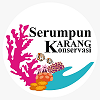Unlocking Mangrove Potential: Sustainable Crab Fisheries in Selindung Sub-watershed, Bangka Island – Indonesia
DOI:
https://doi.org/10.61548/cmj.v2i2.36Keywords:
river watershed, mangrove crab, environment, Mangrove, trap fishermen, managementAbstract
The identification of mangroves thriving around river estuaries is essential for managing natural resource potential in the Selindung Sub-Watershed. This study evaluates the mangrove resource potential and the livelihoods of crab trap fishermen in the Selindung Sub-Watershed, part of the Baturusa Watershed. Conducted from June to November 2024 in Pagarawan Village, Merawang District, Bangka Regency, this research employed a mixed-method approach, integrating qualitative and quantitative analyses, to identify mangrove species and assess the mangrove crab (Scylla spp.) fishery. The results revealed significant natural resource potential in the Selindung Sub-Watershed, encompassing 349 hectares of mangrove forests with dense canopy cover (≥80%), classified as high-quality habitat. Ten mangrove species were identified, including dominant taxa such as Bruguiera gymnorrhiza, Rhizophora mucronata, and Sonneratia alba. The mangrove crab fishery represents a vital livelihood for local fishermen, who supply their catch to Fish Farming Groups (Pokdakan) for fattening purposes. The sustainability of this fishery is closely tied to the health of the mangrove ecosystem. To ensure the long-term preservation of mangroves and their associated resources, sustainable management policies are required, supported by adequate budget allocation, law enforcement, capacity building, equitable supply chain advocacy, stakeholder engagement, and community education. These measures are critical for fostering ecosystem resilience while supporting the socio-economic well-being of local communities.
Downloads
Downloads
Published
Issue
Section
License
Copyright (c) 2024 Coastal and Marine Journal

This work is licensed under a Creative Commons Attribution-ShareAlike 4.0 International License.

This work is licensed under a Creative Commons Attribution-ShareAlike 4.0 International License.
Copyright Transfer Terms
- The author in submitting online understands that if the manuscript is accepted for publication, the copyright of the manuscript will be given to the Coastal and Marine Journal as the publisher of the journal.
- Copyright includes the exclusive right to reproduce and distribute articles in all forms of media, including reprints, photographs, microfilm and other similar reproductions, as well as their translations.










